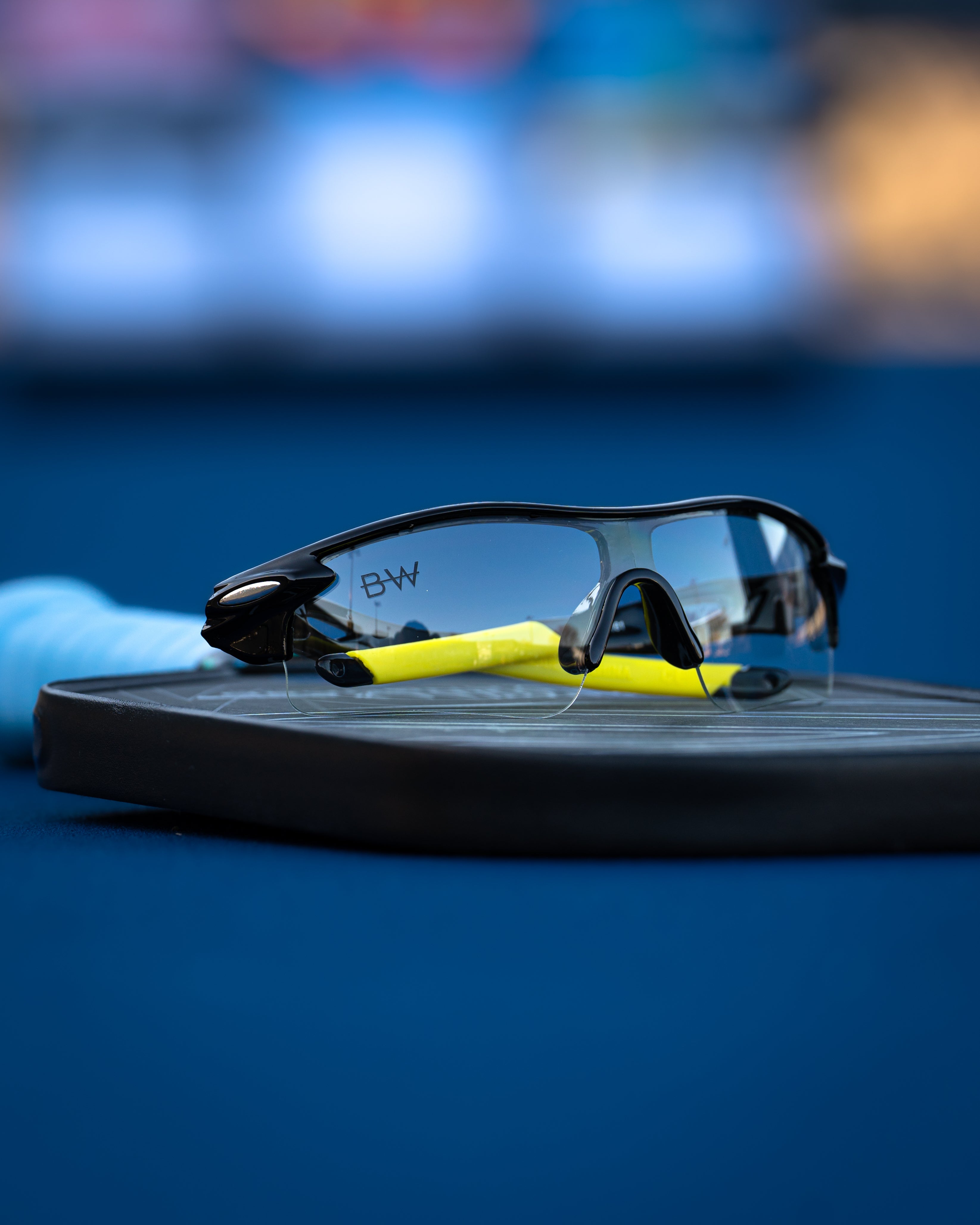Which RX Lens Wins in Shadowy Corners?
Share
Every pickleball player knows that visibility in shadowy or low-light areas of the court can make or break a rally. Whether you’re competing in indoor courts with uneven lighting, shaded outdoor venues, or transitioning between bright sunlight and shaded spots, the right prescription (RX) lens is crucial for clear, reliable vision.
In this deep dive, we explore which RX lens options perform best in shadowy corners, examining lens technology, tint choices, and frame compatibility. We’ll also walk you through key product recommendations from Blinded Wear, supported by user reviews and expert insights.
Understanding Shadowy Corners: The Challenge for RX Lenses
Shadowy corners create unique visual challenges:
- Reduced light intensity makes it harder to discern ball speed and spin.
- Contrast loss decreases the ability to separate the ball from the background.
- Eye strain can occur as the eyes try to adjust rapidly between bright and dark areas.
The right RX lens must enhance contrast and clarity without introducing distortion or color imbalance.
Types of RX Lenses and Their Performance in Low-Light
Clear Lenses
Clear lenses offer the maximum amount of visible light transmission (VLT), making them a natural choice for indoor or low-light play. They don’t alter colors, providing natural vision and excellent contrast.
Pros: Best for shadowy corners; no color distortion; reduces eye fatigue indoors.
Cons: Offers no sun protection or glare reduction in bright outdoor light.
Gray Tinted Lenses
Gray lenses reduce overall brightness while maintaining true color perception, which is useful outdoors in moderate to bright light. However, their reduced light transmission can impair visibility in shadowy corners.
Pros: Great for bright sunlight; reduces glare; maintains color fidelity.
Cons: Not optimal for low-light or shadowy conditions; can cause vision to feel darker.
Transitional (Photochromic) Lenses
Transitional lenses automatically darken in bright light and clear up indoors or in shade. This adaptive technology offers versatility but may have limitations:
- Activation and fade times vary by temperature and light intensity.
- May not fully clear up in some indoor environments, causing slight tint.
Pros: Convenience for players moving between light conditions; some glare reduction outdoors.
Cons: Not fully clear indoors or in shadowy spots; slower adaptation times can affect vision.
Non-Polarized Polycarbonate Lenses
Blinded Wear uses high-quality polycarbonate lenses in all RX frames. They are impact-resistant, lightweight, and non-polarized to preserve depth perception critical for sports. Non-polarized lenses avoid darkening water or asphalt reflections that can confuse players in shadowy zones.
Our RX Lens Recommendations for Shadowy Corners
Clear Polycarbonate RX Lenses — The Best Option for Low Light
For players regularly encountering shadowy corners or indoor courts, clear lenses are the best choice. They maximize visible light transmission and preserve true color perception. Our RX frames come standard with clear polycarbonate lenses, which are:
- Impact-resistant for safety during play
- Lightweight for comfort
- Compatible with all Blinded Wear RX frames
Perfect frame pairings for clear lenses include:
- Frost RX — durable and designed for rough play
- Crystal Wave II RX — versatile and high-performing
- Sea Sand RX — comfortable for all-day wear
When Transitional Lenses Make Sense
If your play involves frequent outdoor-to-indoor transitions and you want a single lens solution, transitional lenses offer convenience. However, keep in mind:
- They may retain slight tint in shadowy corners indoors.
- Activation speed depends on temperature; colder environments slow darkening.
The Crystal Wave II RX and Phantom II RX frames support transitional lenses perfectly, offering adaptability with strong frame support and comfort.
How Blinded Wear Frames Enhance Vision in Shadowy Corners
Beyond lens choice, frame design contributes to visual performance:
- Wraparound frames like the Crystal Wave II RX and Zebra II RX increase peripheral vision, helping you detect opponents or balls in your side view, especially in low light.
- Adjustable nose pads and non-slip temple grips improve fit and reduce lens fogging, which can impair vision in shadowy areas.
- Durable, lightweight materials prevent frame shifts during intense play, maintaining consistent vision focus.
Customer Insights: Lens Performance in Low Light
“I switched to clear lenses for my indoor courts and shadowy spots. The difference in clarity is night and day. The Frost RX frames hold the lenses perfectly and feel great all match.” – Morgan H., TX
“I use transitional lenses in my Crystal Wave II RX frames because I move between outdoor sunlight and covered courts. While the lenses don’t fully clear indoors, the convenience outweighs it for me.” – Andre W., CA
Additional Resources to Help You Decide
- This RX Frame Outlasted My Socks and Shirt — durability insights
- The Frame That Made Me Look—and Feel—Like a Pro — performance and fit
- The Frame That Gives You Side Vision Like an Eagle — maximizing peripheral vision
Ordering and Lens Options
All Blinded Wear prescription glasses come with:
- 1.61 high-index polycarbonate lenses included at no extra cost
- Non-polarized lenses to preserve natural depth perception
- Two-week shipping on all RX orders
- Final sale policy—please verify your prescription before purchase
Final Thoughts: Which RX Lens Wins?
For shadowy corners and low-light conditions, clear polycarbonate RX lenses offer the best visibility and performance. They maximize light transmission, reduce eye strain, and maintain true color perception without tint interference.
Transitional lenses provide convenience for mixed-light environments but come with some indoor tint limitations.
Pair your lenses with frames like the Crystal Wave II RX, Frost RX, or Sea Sand RX for optimal fit, grip, and peripheral vision in any lighting.
Find Your Ideal RX Lens and Frame Today
Unsure which lens and frame combination suits your needs? Take our Pickleball Sunglasses Quiz to get personalized recommendations.
Browse our complete Prescription Pickleball Eyewear Collection for all available frames and lens options.
